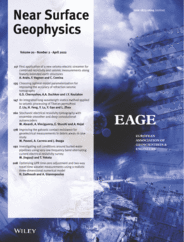
Full text loading...
Linearly extended earth structures (e.g., river embankments and earth dams) require specific characterization tools to efficiently evaluate stability conditions along their relevant extensions. For this aim, geophysical surveys, both seismic and electric, are commonly used and considered complementary to geotechnical investigations. They provide imaging of parameter variations along the whole structures and not just local information in correspondence of boreholes. Improvements in these survey methodologies can further increase the application of these geophysical methods, eventually also as fast‐screening characterization tools. In this paper, the first application of a new seismo‐electric streamer, specifically designed for these aims, is presented. The developed streamer allows the contemporary acquisition of seismic and electric data while being dragged along the investigated structure. The technical solutions adopted for its construction are briefly described, and its application to the characterization of an embankment is presented. The results obtained with this new system are comparable with usually adopted investigation tools with the advantage of reduced survey time and increased efficiency.

Article metrics loading...

Full text loading...
References


Data & Media loading...

